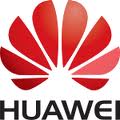 Ericsson’s ConsumerLab has released the results of a recent study called “Multi Screen Media Consumption 2010”. Data was collected in China, Germany, Spain, Sweden, Taiwan, the UK and US. The sample in the study is representative of more than 300 million consumers.
Ericsson’s ConsumerLab has released the results of a recent study called “Multi Screen Media Consumption 2010”. Data was collected in China, Germany, Spain, Sweden, Taiwan, the UK and US. The sample in the study is representative of more than 300 million consumers.
Some of the key highlights of consumer survey are:
- Internet-based TV is growing rapidly, with 50 percent of the consumers using it every week
- Promise of future revenues, despite consumers’ current unwillingness to pay for online content
- Consumer spending will shift with increase of on-demand
- High interest in touch screen tablet
- Sample representative of more than 300 million consumers
The study shows that people are spending up to 35 percent of their leisure time watching TV and video content, and that consumers are becoming more aware of new technologies, which in turn are creating new patterns of media consumption.
At least once a week, 93 percent are still watching scheduled “linear” broadcast TV, but the role of broadcast TV is changing owing to the introduction of new distribution channels. More than 70 percent of consumers surveyed are streaming, downloading or watching recorded broadcast TV on a weekly basis, and 50 percent are using internet-based on-demand TV/video every week
Broadcast live content is still very important to consumers, but the ability to decide when and how to watch TV will affect the role of linear or scheduled broadcast content.
The consumers are requesting a personalized, easy-to-use, high-quality, on-demand service without commercial breaks as their next TV service.
Anders Erlandsson, Senior Advisor at Ericsson ConsumerLab, says: “The conclusion of our study is that the consumption is fragmented and complex. There are few established consumption patterns and it’s a trial-and-error market with lots of curiosity around it. “The consumer is looking for a solution that can offer them the freedom to choose what they want, when they want it and how they want it. The user experience is in focus, rather than the technical platform.”
Data shows a clear correlation between which features consumers find important and their willingness to pay for them. Today, the consumer spending is not proportionate to the viewing time invested. The average consumer spends EUR 38 per month on their TV viewing, and almost 60 percent of that relates to broadcast TV. However, since the time spent watching broadcast TV accounts for only about 40 percent of the total TV/video consumption, it is clear that consumers are not paying for what they use the most. Ericsson ConsumerLab findings show clearly that consumer spending will shift in the future, with a significant increase in on-demand spending, provided that consumer requirements for high quality, ease of use and access to the right content are met.
The study also covers consumers’ attitudes to the touch screen tablet and how it fits into their TV consumption; 37 percent are very interested in using a tablet as a remote control.
At Ericsson ConsumerLab studies focus on how consumers act and what they think about telecom and TV products and services, helping operators understand their customers and develop revenue-generating strategies.




